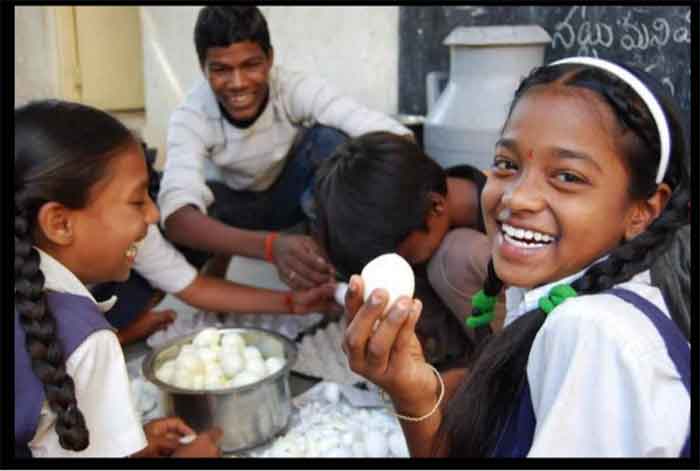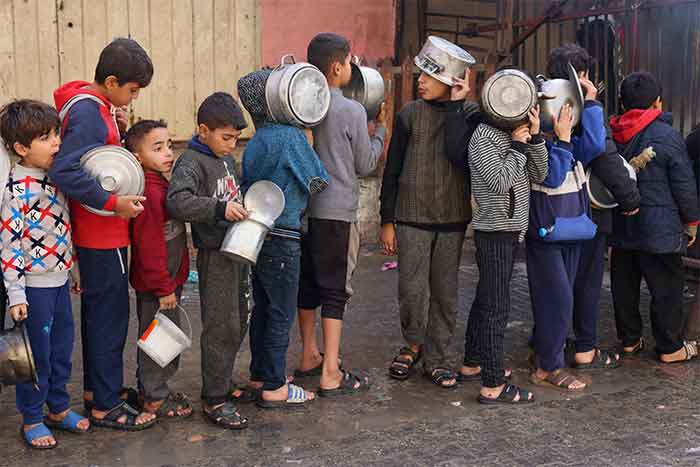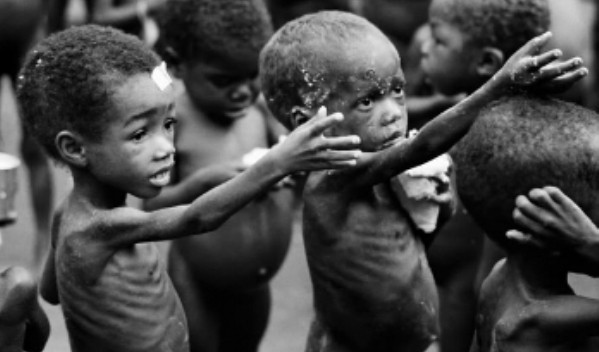
It is a matter of worry that at a GHI score of 28.7 in the Global Hunger Index Report 2023, India ranks at 111position out of the 125 countries surveyed. In comparison, our neighbours’ performance is better with Sri Lanka at the rank of 60, Nepal 69, Bangladesh 81 and Pakistan at 102. A GHI score of 9.9 or less is considered to be low, 10.0–19.9 moderate, 20.0–34.9 serious, 35.0–49.9 alarming, and 50.0 or more is extremely alarming. That we are at a serious level of hunger is a cause of real concern. (1)
GHI scores are based on the values of four component indicators- Undernourishment that is insufficient caloric intake; Child Stunting that is low height for the age; Child wasting that is low weight for age and child mortality which reflects the share of children who die before their fifth birthday.
The National Family Health Survey (NFHS) 2019-21 revealed that India has seen no significant improvement in health and nutritional status among its population. 7.7% of children are severely wasted, 19.3% are wasted, and 35.5% are stunted. It is therefore of primary importance that the issue of under nutrition is addressed for better health of our citizens. This needs steps to reduce inequality by policy reform, effective implementation of nutrition programs, and ensuring a seamless food distribution system. National food Security Act 2013 should be implemented effectively.
An active Indian adult requires 2800 – 3200 Calories per day while a person doing manual labour will require over 3700 calories per day. A manual worker therefore requires higher amount of food intake.
A balanced nutritious diet means sufficient number of proteins, fats, carbohydrates and micro nutrients in the form of vitamins and minerals. According to the Planetary Health Diet as suggested by the EAT-Lancet Commission on Food, Planet and Health the daily food should include Nuts: 50 g, Legumes (pulses, lentils, beans): 75 gm, Fish: 28 gm, Eggs: 13 gm / day ( 1 egg per week), Meat: 14 gm / Chicken: 29 gm, Carbohydrate: whole grain bread and rice, 232 gm, Carbohydrate: 50 gm of starchy vegetables like potato and yam, Dairy: 250 gm, Vegetables: 300 gm of non-starchy vegetables and 200 gm of fruit, Other: 31 g of sugar and Cooking oil : 50 g. Indian Council of Medical Research too has issued similar guidelines for Indians. (2) (3)
At the present market price the cost of this food per person comes to be around Rs.200/- per day. This means that a family of five members should spend Rs.1000/- per day or Rs.30000/- per month on food only.
According to the State of Food Security and Nutrition in the World (SOFI) 2023 report, which is jointly prepared by the Food and Agriculture Organisation of the United Nations (FAO), International Fund for Agricultural Development (IFAD), United Nations Children’s Fund (UNICEF), World Food Programme (WFP) and World Health Organisation (WHO), 74% of the Indian population were not able to afford a healthy diet in 2021, which is the fourth highest share among the nations considered. This means that more than 100 crore people in India are bound to eat food with insufficient nutrition. It is well known that Poverty causes malnutrition, which, in turn, adds to poverty. (4)
It is pertinent therefore that the purchasing capacity of the people is raised through poverty alleviation, sufficient wages and ensure means of livelihood to meet the requirement of quality food for the citizens.
The government’s scheme to give 5 kg of grains and One Kg Daal and a bit of oil does not meet the required micro nutrients like vitamins and minerals which are essential for physical and mental growth. That the people are satisfied with even this much food is a matter of shame to the nation. It points out to the level of poverty that food which is barely sufficient for subsistence is a big relief to the people.
It would be pertinent to quote the Oxfam’s inequality report, ‘top 10% of the Indian population holds 77% of the total national wealth. 73% of the wealth generated in 2017 went to the richest 1%, while 670 million Indians who comprise the poorest half of the population saw only a 1% increase in their wealth. There are 119 billionaires in India. Their number has increased from only 9 in 2000 to 101 in 2017. Between 2018 and 2022, India is estimated to have produced 70 new millionaires every day. This is in contrast to that many ordinary Indians are not able to access the health care they need. 63 million of them are pushed into poverty because of healthcare costs every year – almost two people every second. It would take 941 years for a minimum wage worker in rural India to earn what the top paid executive at a leading Indian garment company earns in a year’.
‘While the Indian government barely taxes its wealthiest citizens, its spending on public healthcare ranks among the lowest in the world. In the place of a well-funded health service, it has promoted an increasingly powerful commercial health sector’.
‘As a result, decent healthcare is a luxury only available to those who have the money to pay for it. While the country is a top destination for medical tourism, the poorest Indian states have infant mortality rates higher than those in sub-Saharan Africa. India accounts for 17% of global maternal deaths, and 21% of deaths among children below five years’.(5)
Various workers’ organizations have demanded minimum wage based on the principle of the caloric needs to be fixed at Rs.26000/- per month. To utter dismay, the government announced a floor level wage as Rs.178/- per day. This is despite an internal labour ministry committee recommendation of Rs.375/- per day.
In this context the way Union Minister Samriti Irani spoke about Global Hunger Index at a FICCI event on ‘Future Role Of Women In India’ in Hyderabad is a reflection of her arrogance and insensitivity to the cause of the poor. It is important to know that no other country has objected to the methodology of calculating hunger index. It is a matter of anguish that Prof. K S James, Senior Professor and Director of International Institute for Population Sciences (IIPS) which had conducted the National Family Health Survey 5 (2019 – 2021) and reported increase in Anaemia among pregnant women and children in the country was suspended for bringing this fact in the report as it goes against the interest of the government.
Our government’s aspiration to become 5 trillion economy stands exposed for its hollow claims. Instead of criticising the report the government should have spoken about steps to be taken to correct this aberration.
Dr Arun Mitra is a Practicing ENT Surgeon in Ludhiana, Punjab. He is also the President of Indian Doctors for Peace and Development (IDPD) www.idpd.org
References:














































